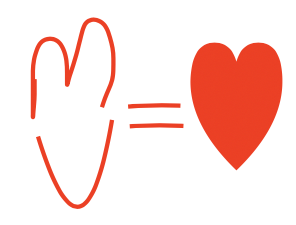by Judi Fusco
This post was written during our book club and discusses some concepts that were not covered in the book but are important as we think about constructionism.
We’re going to discuss constructionism and also think about constructivism; they are similar words and Papert’s constructionism grew out of Piaget’s constructivism. Note, we’ll talk more about Piaget’s constructivism (and Vygotsky’s social constructivism) in another post soon.
Our book club book, Coding as a Playground, discussed how Papert didn’t want to define constructionism rigidly. Marina Bers gives us some of the dimensions he discussed and some help thinking about it.
On page 21, she writes:
- Learning by designing personally meaningful projects to share in the community;
- Using concrete objects to build and explore the world;
- Identifying powerful ideas from the domain of study;
- Engaging in self-reflection as part of the learning process.
Bers goes on to discuss how constructionism is in line with ideas about how important “learning by doing” is for young learners. In another paper, Karen Brennan (2015) also discusses how important it is to let learners to design, personalize, share, and reflect during the constructionist process.You can see those ideas in the principles Bers discussed.
Karen Brennan also writes “Constructionism is grounded in the belief that the most effective learning experiences grow out of the active construction of all types of things, particularly things that are personally or socially meaningful (Bruckman, 2006; Papert. 1980), that are developed through interactions with others as audience, collaborators, and coaches (Papert, 1980; Rogoff, 1994), and that support thinking about one’s own thinking (Kolodner et al., 2003; Papert, 1980).”

Papert’s Paper Airplane: construction(ism) plus sharing the creation to discuss it with others, to think about what’s important and not important, and then working alone or with others to make the creation better.
I’m going to digress a little from thinking about elements of constructionism and give a little background on constructionism and constructivism. Papert was the father of constructionism and he worked with Jean Piaget, the genetic epistemologist who developed theories of constructivism to help us understand how young children acquire knowledge (background: genetic epistemologist, genetic = genesis or beginning; epistemology = study of knowledge). Bers tells us how constructionism is a play on and tribute to constructivism. Constructivism and constructionism are two terms that have caused much confusion in many folks. A few years back, my graduate students and I came up with a mnemonic to help them remember who developed the different ideas, and what constructionism and constructivism mean.
The mnemonic: Papert, his last name looks like “paper” with a t and you can construct a paper airplane because you like to make them, which makes it personally meaningful. Key here is you don’t constructivize them, you construct them.
When you’ve made your paper airplane you can show it and demonstrate how it flies to your friends and they can give you feedback on the design of the airplane. As you talk about it, you might discuss something that improves it, and then you can refine it. This whole process, making, discussing, and learning from it is constructionism. You learn because you make something, share it, discuss it, reflect on it, and continue to improve it. (You might have to use another sheet of paper for another paper airplane, though.)

This is in contrast to Piaget’s constructivism, which is all about what is happening in the mind: If you put an m (for mind) on top of a v (for constructivism) you can see how much we love constructivism.
Piaget’s constructivism is a theory about what happens in the mind as you actively create structures in the mind. Here’s the mnemonic: if you put an m (for mind) on top of a v (for constructivism) you can see how much we love constructivism. (Work with us here, it’s a mnemonic — also, there’s a v in love, too.) (See picture.)
Piaget’s constructivism is all about what is happening in the mind, whereas constructionism discusses the process that brings learners together to think about something tangible and specific. Of course, when we have learners work together, create, and build, we also hope they add new things to their minds (constructivism); the two should absolutely go together. (And it gets fuzzy here! Where does constructionism end and constructivism begin?) A lot of people talk about constructionism as learning by doing, and it absolutely is, but while we create, we should also discuss, iterate, and learn (create new knowledge structures, or modify old ones in our heads). I constructed this blog post to help us have something to talk about. Please join me and discuss so we can learn more together.
The perfect place to discuss is in our Book Club on Coding as a Playground, talk to about this post or even better, we’d love for you to share your real life examples of constructionism in classrooms as you work with students to help them learn to code or to think computationally. I’d love to know how you think about these terms and how you get your learners to design, personalize, share, and reflect on important parts of the work they are doing for their learning in your classroom! Tweet #CIRCLEdu or come share in the Book Club!
Resources
If you’d like to know more about Constructivism and Constructionism see:
http://fablearn.stanford.edu/fellows/blog/science-teacher’s-take-constructivism-constructionism
http://fablearn.stanford.edu/fellows/blog/constructivist-science
http://fablearn.stanford.edu/fellows/blog/constructionism-learning-theory-and-model-maker-education
Reference: Brennan, K. (2015). Beyond Technocentrism. Constructivist Foundations, 10(3).
How to cite this work
CIRCL Educator posts are licensed under a Creative Commons Attribution 4.0 International License. If you use content from this site, please cite the post and consider adding: "Used under a Creative Commons Attribution 4.0 International License (http://creativecommons.org/licenses/by/4.0/)."
Suggested citation format: [Authors] ([Year]). [Title]. CIRCLEducators Blog. Retrieved from [URL]
